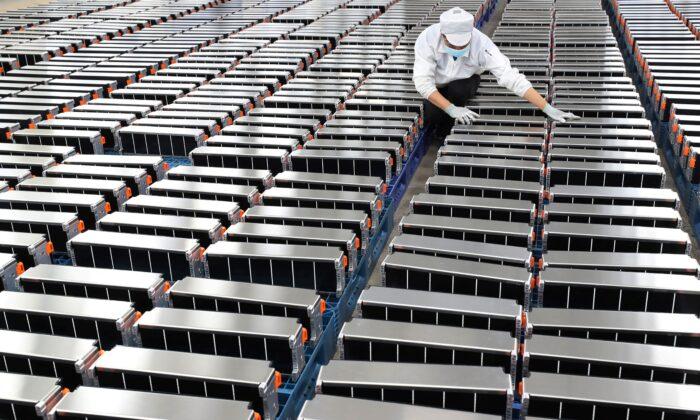The next phase in Australia’s decoupling from fossil fuels will involve a huge investment in a national battery strategy that aims to take advantage of global growth in clean energy solutions.
Australia is one of the largest lithium producers in the mineral form of spodumene worldwide. Currently, most spodumene concentrate mined in Australia is exported, as the country has limited capabilities to refine the mineral into battery-grade lithium hydroxide.
However, a $532 million (US$352 million) investment announced by the government aims to establish Australia as a battery producer. China is the world’s biggest producer of lithium batteries, fulfilling around three-quarters of global demand.
The electrification of transportation and the ongoing energy transition towards sustainable power saw lithium resource demand reach 85 percent of the total demand needed for electric vehicles in 2023.
Battery demand is set to keep rising exponentially, and Industry Minister Ed Husic told ABC Radio that Australia was looking to utilise its existing assets to battery move production in-house.
“We’re very good at mining and refining, a lot of the processing is done in China. We can do a lot more of this onshore,” he said.
“What we’re trying to [do] through the strategy is open people’s eyes to the fact that we have been a leader in technology supporting batteries and we should be able to do more.”
The shift to battery production will come under the umbrella of “Made in Australia,” an innovation initiative aimed at bolstering Australia’s industrial and economic sovereignty, particularly in transitioning to a net zero economy.
One of its primary goals is to prioritise renewable energy projects, and $1.7 billion has already been earmarked to target green metals, batteries, and low-carbon liquid fuels and strengthen mineral supply chains.
Mr. Husic’s comments were reinforced by Prime Minister Anthony Albanese who said, “Batteries are a critical ingredient in Australia’s clean energy mix.”

Opposition Supports Moving To Nuclear Power
The decision to focus Australia on a future powered by clean energy is at odds with the position of the federal opposition, which has backed nuclear power as the solution to eliminating emissions and reaching net-zero targets.Shadow Energy Minister Ted O’Brien has suggested that with the right framework, nuclear power could be operational in Australia by the mid-2030s, but any implementation of it would extend beyond the target dates set down for net zero to be achieved.
The opposition plans to unveil seven proposed sites for new nuclear installations in the next few weeks.
Mr. O'Brien told 2GB that nuclear energy was an adequate replacement for power generated by coal and refuted a study that suggested nuclear power would ultimately be more expensive to produce.
“As coal exits the system for our electricity grid, there’s an opportunity for us to replace it with like-for-like, 24/7, always-on power, coming from zero-emissions nuclear energy plants. ”
“We’re interested in the Australian consumer, the Australian business, what’s actually going to get prices down,” Mr. O'Brien said.







